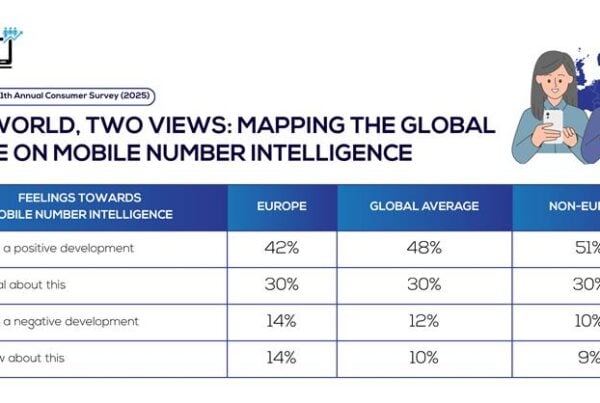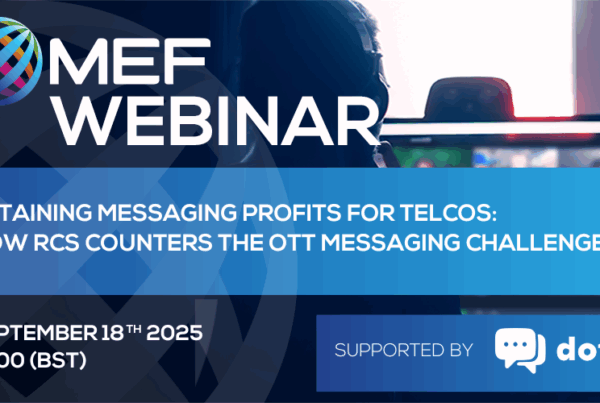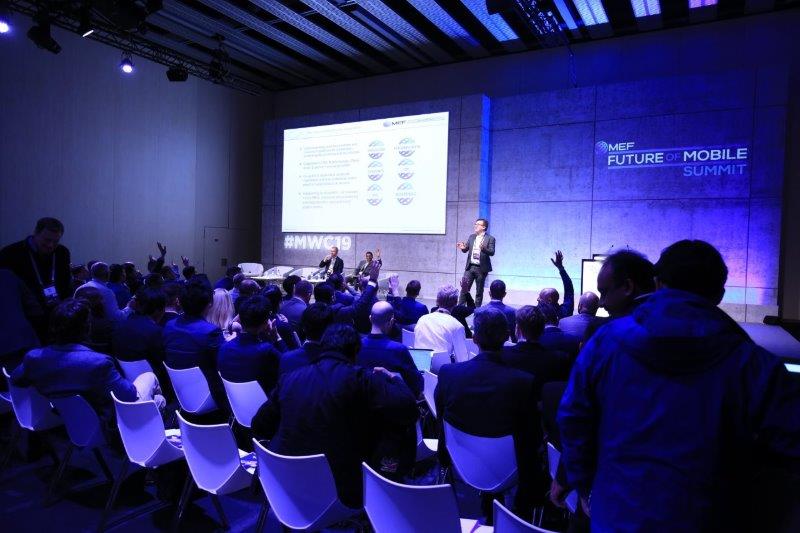The wholesale telecom industry has always adapted to change but we may now be entering its most profound shift yet. At a recent MEF Connectivity & Wholesale IG meeting, the discussion turned to vCon: a new AI-ready standard for capturing conversations. More than just replacing call detail records, vCon unlocks smarter services, compliance, and entirely new business models. MEF Programme Lead for Connectivity & Wholesale Isabelle Paradis explains.
The wholesale telecom industry is no stranger to transformation – from the birth of voice over IP to the rise of cloud-based networks, the sector has continually evolved. But if Jeff Pulver’s presentation at the May MEF Connectivity & Wholesale Interest Group meeting is any indication, we may be entering the most significant shift yet.

Pulver, a veteran of telecom disruption (best known as co-founding Vonage and the landmark “Pulver Order” that helped pave the way for internet telephony), believes we’re now entering the era of vCon – a standardized, AI-ready file format designed to capture and structure digital conversations.
This is the foundation for smarter services, improved compliance, and entirely new business models. So what exactly is vCon, and why should wholesalers pay attention? Let’s unpack the opportunity.
By including the who, what, when, where, and why of every conversation – not just voice, but email, messaging, and video – vCon becomes a more complete, future-proofed record. It enables entirely new capabilities like AI-driven insights, consent auditing, fraud detection, and real-time customer experience improvements.”
Moving Beyond the Call Detail Record
Call Detail Records (CDRs) have long been the bedrock of wholesale telecom operations. But as Pulver notes, they offer a limited view: who called whom, when, and for how long. In a world increasingly reliant on multi-channel communication, such as voice, video, messaging, chat,this is no longer enough.
vCon (short for “virtual conversation”) is an emerging IETF standard designed to capture not just the fact of communication, but the context. It enables metadata, transcripts, consent information, and even media files to be wrapped in a single, structured JSON format – interoperable across platforms and ready to integrate with AI systems, CRMs, compliance tools, and more. In short, it’s a “memory layer” for communications.
While CDRs are useful for billing and basic traceability, they fall short in today’s complex communications environment. They don’t capture what was said, what was agreed, or whether data privacy conditions were met. They don’t extend across communication channels, and they don’t integrate easily with intelligent systems. vCon fills that gap.
By including the who, what, when, where, and why of every conversation – not just voice, but email, messaging, and video – vCon becomes a more complete, future-proofed record. It enables entirely new capabilities like AI-driven insights, consent auditing, fraud detection, and real-time customer experience improvements.
One of the clearest short-term opportunities for wholesalers, when it comes to vCon, lies in upgrading traditional SIP trunks. Pulver suggests the evolution toward Smart SIP – services that capture full vCon records and layer AI-driven analytics on top.
This could enable:
- Automatic call summaries and CRM updates
- Real-time fraud detection
- Enhanced training and compliance monitoring
- Customer satisfaction alerts and feedback loops
By monetizing the intelligence within the communication, rather than just the transport, wholesalers could move away from commoditized pricing models and toward high-value, differentiated offerings.
Trust, Consent and Compliance By Design
Privacy and compliance are often seen as obstacles to innovation, but vCon turns them into features. Through collaboration with regulators such as Ofcom, the FCC, and data privacy groups, vCon includes robust support for consent with purpose.
Users can specify not just whether they consent to recording, but how their data can be used – e.g., for internal training, but not for AI model training. This nuanced approach ensures alignment with global data protection laws such as GDPR, while still enabling powerful AI-driven capabilities.
Real-World Momentum: From Concept to Deployment
While vCon may be new to many, it’s already gaining traction among forward-looking service providers and developers. At the first vCon interop event hosted in April 2025, nine companies from across the globe demonstrated vCon-based services – including smart call routing, automated CRM updates, and real-time analytics.
In addition, regulators such as Ofcom and the FCC are actively participating in the IETF’s Beacon Working Group, helping shape the standard with compliance and auditability in mind. Industry pioneers see this as an opportunity to “build in” trust, transparency, and accountability, rather than bolting them on after the fact.
A Platform for the Future
vCon is also a platform for entirely new services. Some potential use cases range from:
- Intelligent call triage for emergency and social services
- Enhanced insight into enterprise communications
- CRM automation based on structured call metadata
- Training programs powered by real-world conversation analysis
With costs of AI processing falling rapidly and tools becoming more accessible, these services are viable and scalable today.
Practical Examples: Use Cases That Are Already Live
The power of vCon is already being put to use in diverse environments.
- Emergency Response: One U.S. initiative is using vCons to triage calls into a 2-1-1 helpline, helping prioritize support for vulnerable populations – from those experiencing homelessness to victims of domestic violence.
- Disaster Management: In a demo known as “Hurricane Beacon,” callers left voicemails during a simulated crisis. The resulting vCons were triaged using AI, allowing responders to quickly identify who needed help versus who was safe.
- Fraud Detection at Scale: A major international wholesaler has deployed vCons alongside on-premise GPUs to detect and prevent fraud in real time – an application that’s already saving them significant losses.
These early implementations demonstrate just how broad the opportunity is, for both operational efficiency and entirely new services.
Who Needs to Act and How
The promise of vCon is compelling, but it won’t happen on its own. Here’s how different stakeholders can begin:
- Wholesalers should evaluate where and how to integrate vCon into their SIP infrastructure – starting with use cases like CRM syncing, consent tracking, or fraud analytics.
- Vendors and platform providers should ensure compatibility with the vCon standard (JSON-based) and explore ways to expose APIs or features that leverage vCon payloads.
- Enterprises and large-scale buyers should begin asking partners and suppliers what their roadmap is for structured conversation capture – and what value it can unlock in customer service, compliance, and analytics.
The technology is here. The question is whether you’re ready to lead or follow.
A Call to Action for Wholesalers
The industry has a choice: continue with business as usual, or embrace a new layer of intelligence, trust, and transparency in our communications infrastructure.
At MEF, we believe this is a moment for the wholesale community to lead. We encourage members to explore vCon through pilot projects, proof-of-concepts, and collaboration with the growing ecosystem of developers, regulators, and enterprises shaping this space.
The potential is real. The standards are emerging. And the timing is right.





